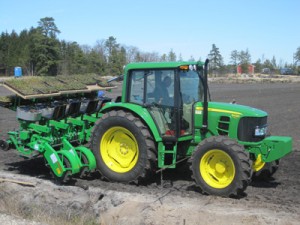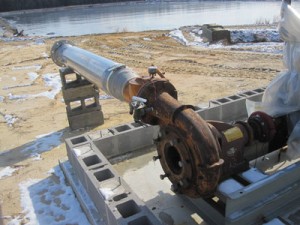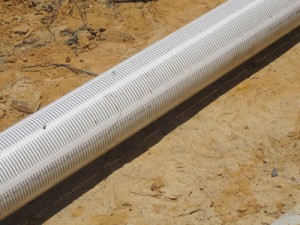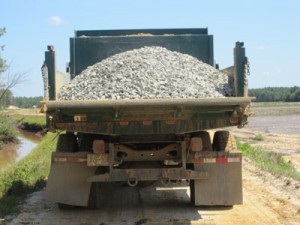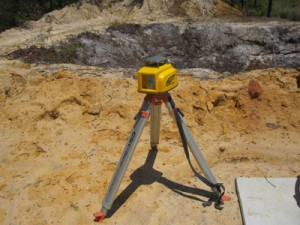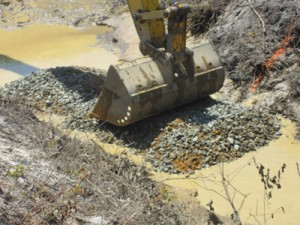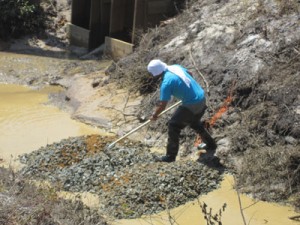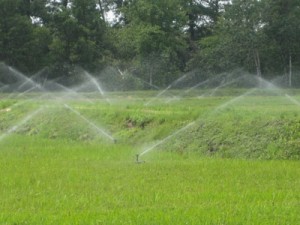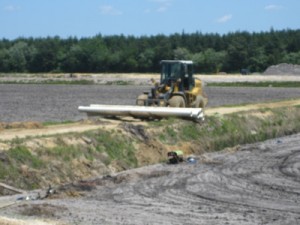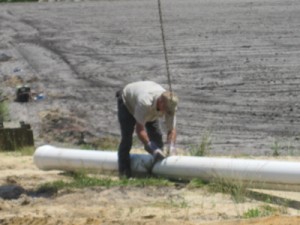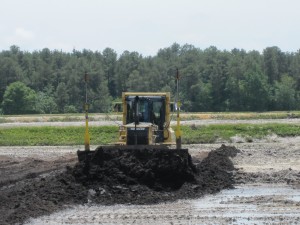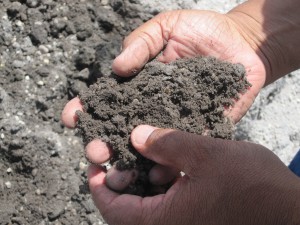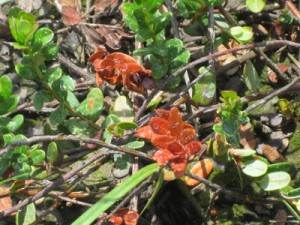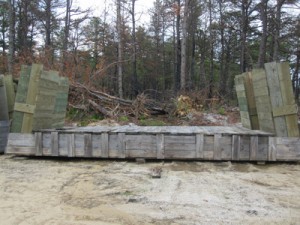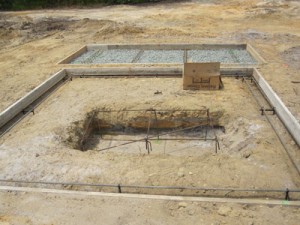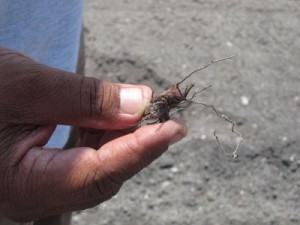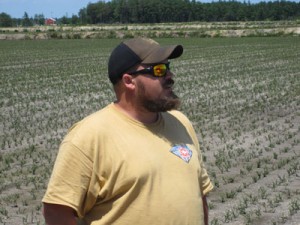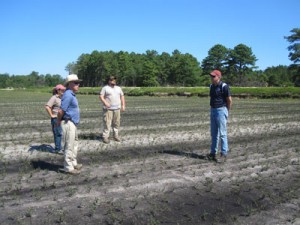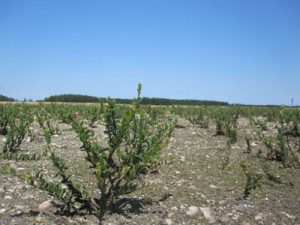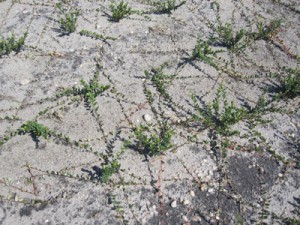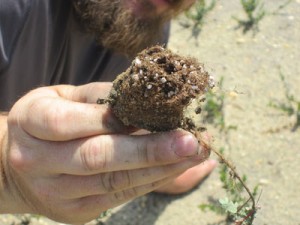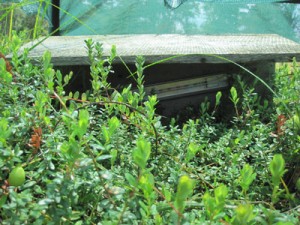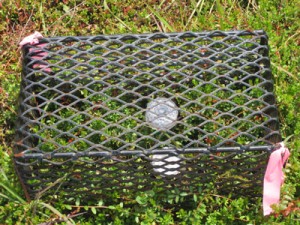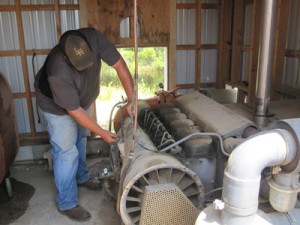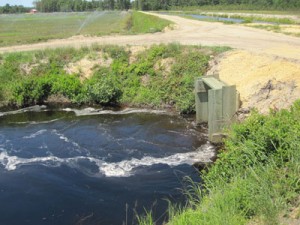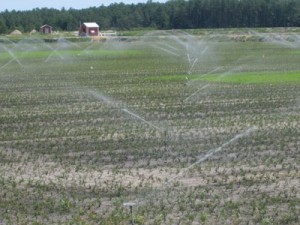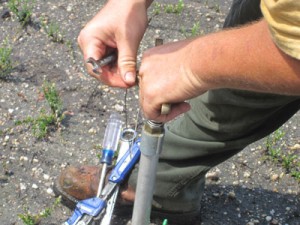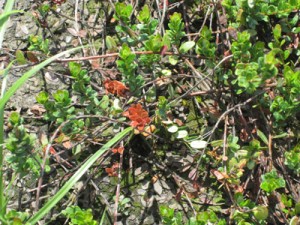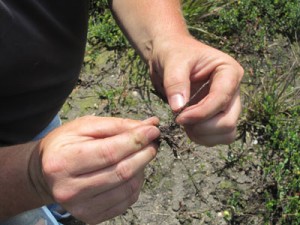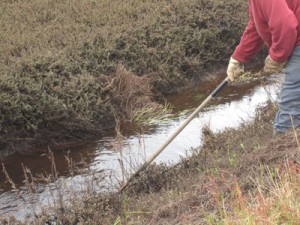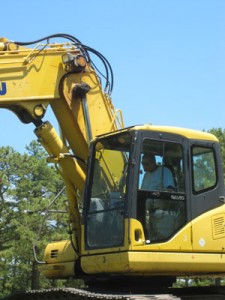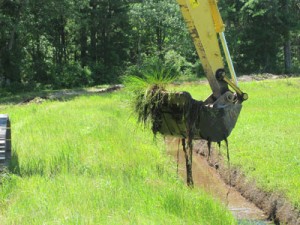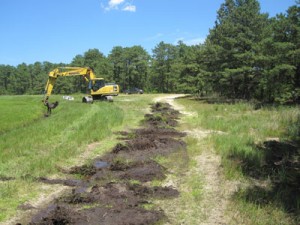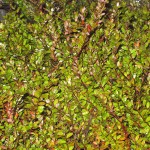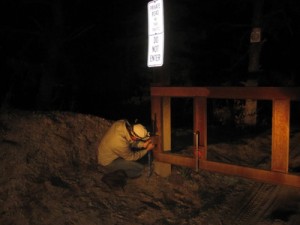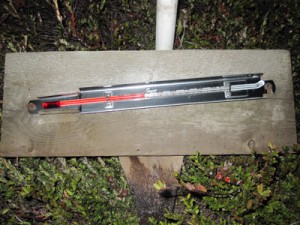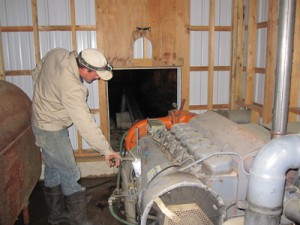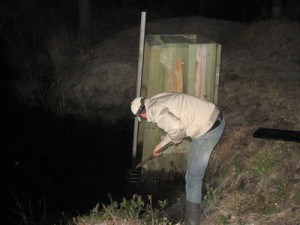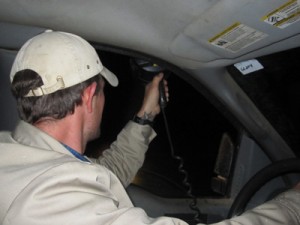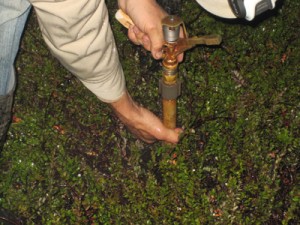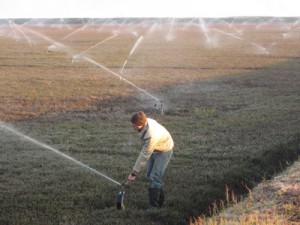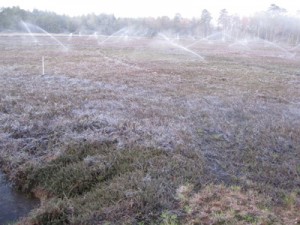Pine Island’s bog renovation team is moving steadily forward on the next stage of our Oswego project at the Boricua bogs, which we will be planting with Crimson Queen this fall. Like the rest of the bogs at the Oswego renovation, they had previously been planted with Early Blacks and had been productive bogs, but “…they were starting to become what we colloquially call ‘mutts’, which means they weren’t true Early Blacks anymore,” Bill says. “Production started to drop off. They were adequate and not necessarily terrible, but definitely no longer up to our standards.”
As we mentioned in January, part of the renovation includes new pump houses. We’ll be installing the larger size double-wall fuel tanks, which have the benefit of better environmental protection (always a concern with water management) and having to be fueled less often, which is more efficient. But first, the bog renovation team had to work closely with the facilities team to get the dog leg and suction line installed.
The installation is fairly straightforward: the team (Facilities supervisor Mike Guest, foreman Wilfredo Pagan, and team member Emmanuel Colon) places an eighteen-inch stone bed at the bottom of the canal. They place the screen (a PVC pipe with slots cut into it) on the stone bed, then add another foot of stones on top. “It’s so much more efficient this way,” says Wilfredo. “We end up using less water with this design, because we don’t need to raise the water as high. And it’s fun to watch!”
While the installation itself is straightforward, it does take some time to make sure it’s done right. The team works with the long arm excavator and a laser level to ensure that the stone bed is properly set, as well as getting into the bed and checking by hand.
Once it’s installed, the stone bed will act to filter out any natural debris that’s in the water, such as leaves, sticks, twigs, and dirt. The stone will stop any debris from entering the system and plugging the sprinklers.
While one team is working on the suction line, another team is installing the main irrigation line as well as laying out a plumb line at Boricua #1 and #2. Plumb line is installed to make sure the layout of the irrigation system is a true grid. Once that’s installed, the team will be able to put in sprinklers.
Bog Renovations manager Joe Colon says all that remains after this is land leveling so that the team can start mapping for the sprinklers and underdrain. “It’s a lot of acreage,” he says. “But we did a lot last time. We can definitely do this.” Wilfredo agrees: “We’re getting better at this all the time.”

